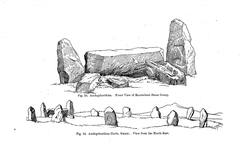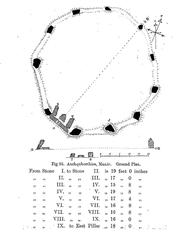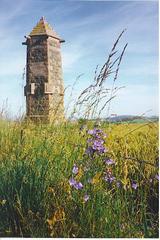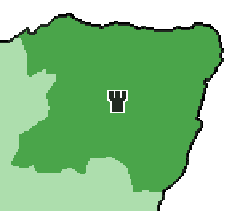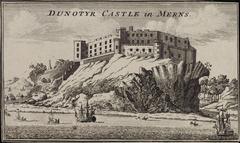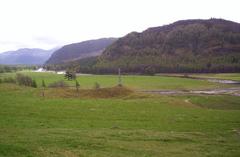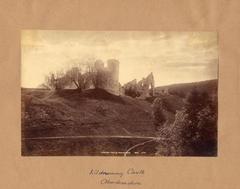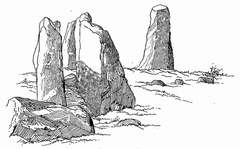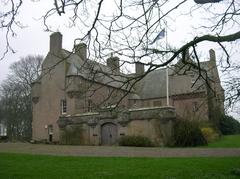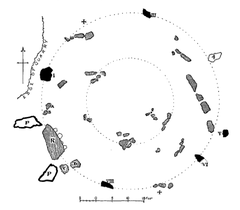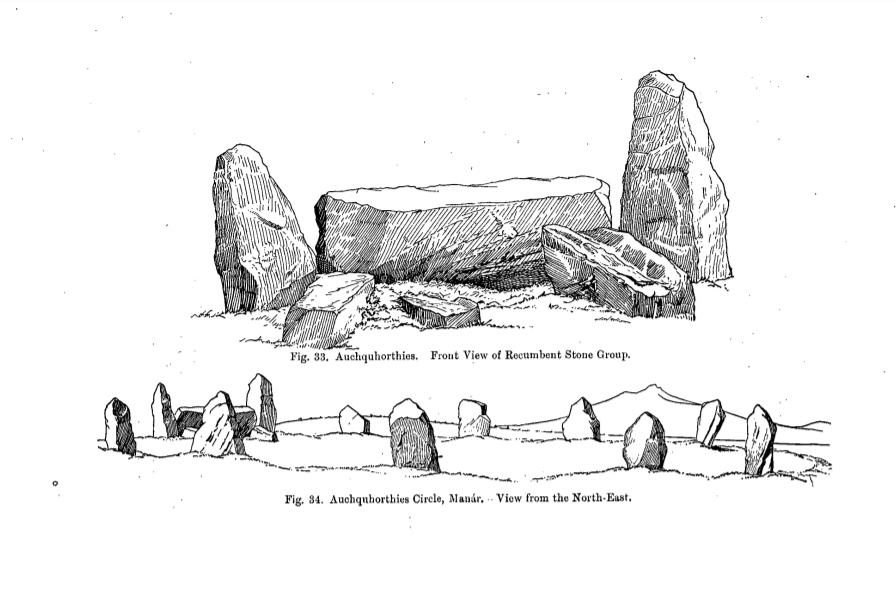
Easter Aquhorthies Stone Circle: Visiting Hours, Tickets, and Travel Guide Near Ballater, United Kingdom
Date: 15/06/2025
Introduction
Easter Aquhorthies Stone Circle is one of Scotland’s most remarkable and best-preserved prehistoric monuments. Located in the peaceful countryside of Aberdeenshire, near Inverurie and within reach of Ballater, this site offers a unique window into the Neolithic and early Bronze Age, dating back more than 4,000 years. Noted for its nearly perfect circular layout, distinctive recumbent stone, and sophisticated astronomical alignments, the circle reveals the ceremonial and cultural sophistication of ancient communities in northeast Scotland. This guide provides detailed historical context, practical visitor information—including Easter Aquhorthies Stone Circle visiting hours and tickets—accessibility notes, and tips for making the most of your visit to one of Aberdeenshire’s ancient treasures (Historic Environment Scotland; VisitAberdeenshire).
Table of Contents
- Introduction
- Historical Background
- Cultural and Ritual Significance
- Visiting Easter Aquhorthies Stone Circle
- Preservation and Conservation
- Frequently Asked Questions (FAQ)
- Summary of Key Features
- Conclusion and Travel Tips
- References
Historical Background
The Recumbent Stone Circle Tradition
Easter Aquhorthies is a classic example of the recumbent stone circle, a monument type found almost exclusively in northeast Scotland. Characterized by a large horizontal (recumbent) stone placed on the south or southwest arc, flanked by two tall upright stones (flankers), these circles are unique in British prehistory. The rest of the circle is formed by smaller upright stones, often arranged in a graded sequence of heights, with the tallest near the recumbent (Historic Environment Scotland).
Aberdeenshire is home to over 100 such circles, but Easter Aquhorthies is renowned for its completeness: all original stones remain standing within a 19th-century protective wall, preserving its original plan and atmosphere (VisitAberdeenshire; Wikipedia).
Dating and Archaeological Evidence
The monument dates to approximately 2200–1800 BCE, bridging the late Neolithic and early Bronze Age. Archaeological investigations have found evidence of burnt stones and incinerated bones, suggesting funerary or ritual activities. A slight mound in the center hints at a possible earlier ring cairn or burial cist, indicating the site may have served as a ceremonial focus for generations (Live Breathe Scotland).
Cultural and Ritual Significance
Astronomical Alignments
One of the most intriguing aspects of Easter Aquhorthies is its astronomical alignment. The recumbent and flankers are positioned on the south-southwest arc and are believed to frame the moon at its southernmost rising during the lunar major standstill, an event occurring every 18.6 years. This alignment suggests the builders had a sophisticated understanding of celestial cycles, possibly using the monument as a ceremonial or calendrical marker (Matrix of Creation).
Polychromy and Stone Selection
The builders’ deliberate use of contrasting stone colors is unique to Easter Aquhorthies. The massive recumbent is red granite with quartz, the flankers are grey granite, and one upright is deep red jasper. This intentional color scheme may have had symbolic, social, or ritual significance, possibly reflecting cosmological beliefs or community identity (Wikipedia; VisitAberdeenshire).
Etymology and Cultural Continuity
The name “Aquhorthies” is thought to derive from Gaelic phrases meaning “field of prayer” or “field of pillar stone,” pointing to the site’s longstanding sacred status. Its continued reverence through history underscores its importance in both prehistoric and later Scottish traditions (Live Breathe Scotland).
Visiting Easter Aquhorthies Stone Circle
Location and Getting There
The site is located about 2 miles west of Inverurie, Aberdeenshire, and approximately 30 miles northwest of Aberdeen, making it easily accessible from Ballater and other local towns. Follow brown tourist signs for “East Aquhorthies Stone Circle.” A small car park is available at the base of a short tarmac track leading uphill to the site. The walk from the car park is manageable for most visitors, taking about 5–10 minutes (Undiscovered Scotland).
Visiting Hours
Easter Aquhorthies Stone Circle is open year-round, with no official opening or closing times. Visitors may access the site at any time, though daylight hours are recommended for safety and the best experience (Historic Environment Scotland).
Tickets and Entry
Admission is free, and no ticket is required. There is a donation box at the car park for voluntary contributions toward site maintenance.
Accessibility
The tarmac path from the car park is relatively smooth but ascends steadily; the final approach is uneven and may be difficult for those with limited mobility. Entry into the circle enclosure is via a small kissing gate, which may not be suitable for all mobility aids. There are no step-free access points directly into the circle (The Modern Antiquarian).
Facilities
There are no toilets, refreshments, or visitor centers on-site. The car park includes an information board and a litter bin. Please bring any supplies you may need and plan accordingly (Undiscovered Scotland).
Guided Tours and Special Events
While there are no regular guided tours, local tour operators and heritage groups occasionally offer guided experiences. Check local tourism websites or the Historic Environment Scotland site for updates.
Photography and Best Viewing Times
The stone circle is especially photogenic during sunrise and sunset, when the stones’ warm hues and the panoramic views toward Bennachie are at their best. Clear days offer optimal lighting, while misty or overcast weather adds atmospheric drama (Spotting History).
Nearby Attractions
Enhance your visit by exploring nearby sites:
- Bennachie: A prominent hill with walking trails and panoramic views.
- Tomnaverie and Loanhead Stone Circles: Other significant recumbent stone circles in Aberdeenshire.
- Brandsbutt and Maiden Stone: Pictish symbol stones near Inverurie.
- Inverurie and Ballater: Local towns with amenities, dining, and accommodations. Ballater is also close to Balmoral Castle (Visit Ballater; VisitScotland).
Preservation and Conservation
Easter Aquhorthies is managed by Historic Environment Scotland and is renowned for its exceptional preservation. The 19th-century stone wall enclosing the circle has protected it from agricultural damage and stone-robbing, ensuring all original stones remain in place (Historic Environment Scotland).
Frequently Asked Questions (FAQ)
Q: What are the visiting hours?
A: The site is open year-round with no official hours; daylight visits are recommended.
Q: Is there an entry fee or ticket required?
A: No, entry is free. Donations for upkeep are welcome.
Q: Is the site accessible for wheelchairs?
A: The tarmac path is partially accessible, but the final stretch and entrance gate may not accommodate all mobility aids.
Q: Are guided tours available?
A: Not on a regular basis; check local tourism resources for special events.
Q: Are there toilets or refreshments on-site?
A: No facilities are available; bring what you need and take rubbish home.
Q: Can I bring my dog?
A: Yes, but please keep pets under control and be mindful of livestock.
Summary of Key Features
- Date of construction: Circa 2200–1800 BCE (late Neolithic to early Bronze Age)
- Type: Recumbent stone circle unique to northeast Scotland
- Stones: Nine uprights, two tall granite flankers, one red granite recumbent, two additional blocks
- Diameter: Approx. 19.5 meters (64 feet)
- Material: Red granite (recumbent), grey granite (flankers), pinkish porphyry, and jasper
- Astronomical alignment: South-southwest, likely lunar and seasonal significance
- Preservation: All stones in original positions, enclosed by a low stone wall
- Setting: Panoramic rural landscape, views toward Bennachie
Conclusion and Travel Tips
Easter Aquhorthies Stone Circle offers an unparalleled glimpse into Scotland’s ancient ceremonial life. Its exceptional preservation, striking stonework, and tranquil setting make it ideal for archaeologists, photographers, and anyone seeking a peaceful historical encounter. Plan your visit for daylight hours, wear sturdy footwear, and bring supplies. Combine your trip with nearby attractions, and consider downloading the Audiala app for guided tours and historical context.
For current updates, maps, and local events, consult Historic Environment Scotland, VisitAberdeenshire, and Canmore.
References
- Historic Environment Scotland
- VisitAberdeenshire
- Wikipedia
- Live Breathe Scotland
- Matrix of Creation
- Megalithic Portal
- Undiscovered Scotland
- The Modern Antiquarian
- Spotting History
- Visit Ballater
- VisitScotland
- Wanderlog
